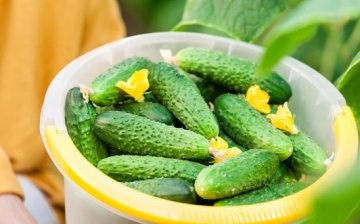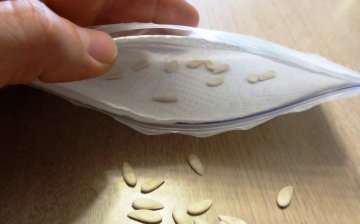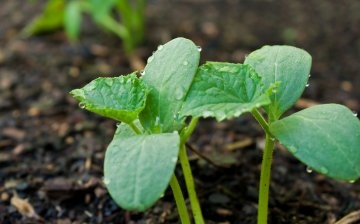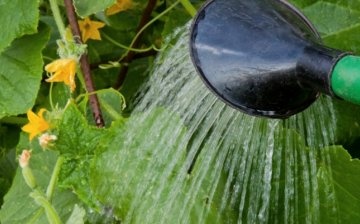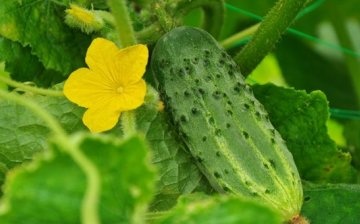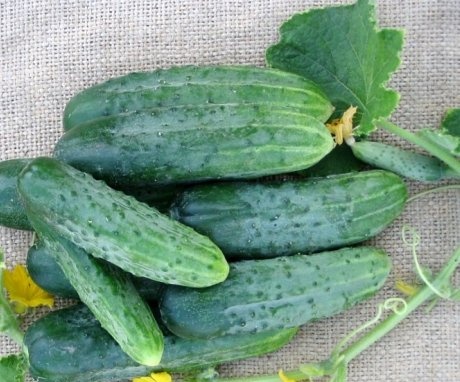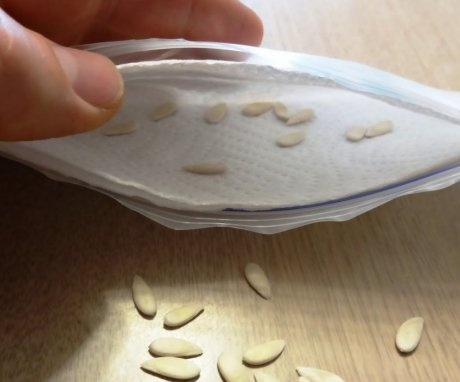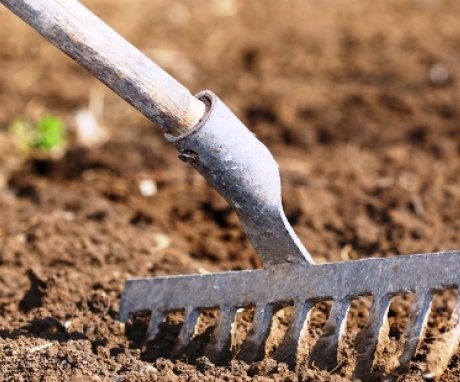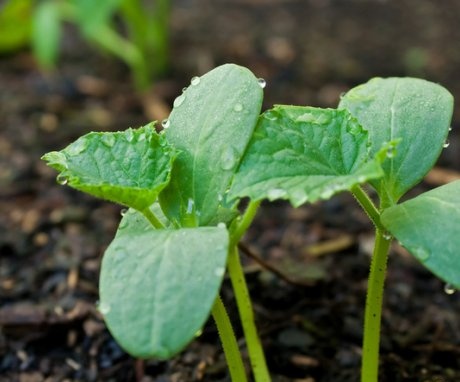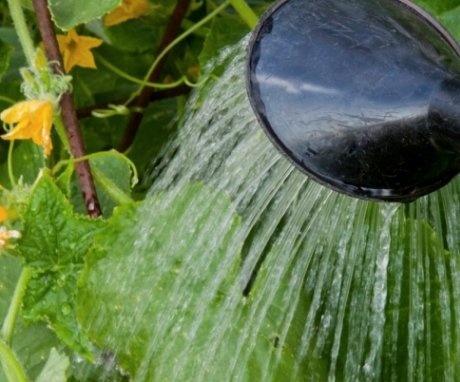Phoenix cucumbers - variety description and agricultural technology
Cucumbers Is an integral part of any menu. Their juicy and aromatic taste is complemented by salads, pickles and marinades. Not a single meal is complete without a cucumber. Therefore, gardeners primarily plant cucumber seeds in a greenhouse or seedling container.
Today there are many varieties and types of crops. Newbies get lost in such a luxurious range. However, experienced vegetable growers recommend the domestic variety "Phoenix". Why? Everything in order.
Content:
- Description of the variety "Phoenix"
- Preparing seeds for planting
- Soil preparation
- Landing dates and rules
- Phoenix cucumber care
- Diseases and pests
Description of the variety "Phoenix"
It is a versatile variety cucumbers, intended for pickling, pickles and fresh consumption - in salads. It is a highly growing bush, branched. Lianas reach 3 m in length, fruits up to 16 cm. The variety is late ripening, ripening occurs 50-60 days after the first shoots. Fruiting until the first frost.
The fruits are large, covered with a thin skin, the taste is excellent.
Do not taste bitter. From 1 sq. M. up to 5 kg of cucumbers are harvested. The variety is resistant to such diseases like powdery mildew, cucumber mosaic virus. Cucumbers "Phoenix" are pollinated by bees - intended for growing in open ground or on ridges under a temporary shelter. The "Phoenix" variety is not grown in greenhouses. Cucumbers love sunny areas, warm, fertile soil. Sowing seed carried out in the ground, heated to 10 ° -15 °.
This variety is considered the best for growing in central Russia, Siberia and the Urals under temporary shelter. High yield and excellent taste - this is what the vegetable growers fell in love with "Phoenix".
Preparing seeds for planting
Before planting the seeds, you should prepare them. Especially if they are collected with your own hands or taken from a neighbor. The inoculum from the manufacturer is not processed, since it has passed all stages of disinfection.
Many experienced vegetable growers simply soak the seeds in damp gauze for several days so that they hatch a little and rise faster. However, agronomists advise hardening the seeds. For this:
- The seed is placed in a damp cloth and refrigerated for several days.
- Then they take it out and let it stand for a couple of days, but already in a warm place.
- After that, the seeds are sown into the soil.
To disinfect and prevent the appearance of diseases during the growing season, seeds are etched in a weak solution of potassium permanganate. The measure will avoid a lot of trouble when growing. 2-3 weeks before planting seed, in a seedling container or open ground, begin to prepare the soil.
Soil preparation
Cucumbers love fertile soil. Prepare it in advance, enriching it with humus or compost... Introduction organics necessarily, otherwise the plant will not have enough nutrients necessary for the ovary. For every 1 sq. M. make 2-3 kg of humus or compost. It is better to mix these two components 1: 1 and add to the soil.
The seedling substrate is prepared from ordinary garden soil mixed with humus.
The soil should be warm, in the cold soil the seeds will begin to rot. Before planting, the soil is spilled with warm, settled water.To disinfect the seedling substrate, use a solution of potassium permanganate or calcining the soil in the oven. This procedure must be done a month before planting the seed.
For the successful cultivation of "Phoenix" you should know agricultural technology planting and timing of sowing seeds.
Landing dates and rules
Seeds on seedlings planted in early May in containers prepared in advance. Transplant in open ground is carried out in late May, early June. Sometimes even later, depending on the region. If the seeds are sown directly into the ground, then the timing should fall at the beginning of June, when the soil has already warmed up and the threat of frost has passed.
Landing features:
- Seed material or seedlings are planted at a distance of 10-15 cm from each other.
- Between rows it will be 40-50 cm. Always keep in mind that the "Phoenix" variety is highly expanding and branched.
- The seeds are not deeply buried, they are sown 1-1.5 cm deep.
Consider planting and immediately install trellises or other devices so that the branches cling to them, and not lie on the ground. So it will be more convenient to harvest, the risk of fungal diseases will immediately decrease.
It is advisable to place young sprouts under a temporary shelter. Cucumbers do not like drafts and the Phoenix variety is no exception. So, at a tender age, they will be protected. As soon as the stems have grown stronger and the ovary has appeared, the shelter can be removed completely.
Phoenix cucumber care
Cucumbers - moisture-loving plants. But their watering should be dosed, the size of the fruits and their number will depend on this. So, until the first ovaries, a moderate watering as the topsoil dries out. The beginning of the ovary process signals more frequent watering. Dryness and heat can impair the taste of the fruit - it will start to taste bitter. It is impossible to arrange dampness and swampiness - this will lead to the appearance of fungal diseases, which is very typical for all varieties of cucumbers, they can again acquire bitterness.
Loosening the soil is necessary, but it must be done carefully.
The stems of the culture are fragile, you can easily break them through carelessness. Weeding is a matter of course. After the appearance of the fifth true leaflet, the main stem is pinched. So the lateral shoots will grow. If they have already given 2 ovaries each, and the shoots have grown more than 30 cm in length, then they must be removed. This procedure is optional, the main thing is to pinch the main stem in time.
During the growing season, you should make fertilizers - organics and mineral complexes:
- Young plants are fed up to the ovary with nitrogen complexes, during the ovary and after with phosphorus-potassium complexes.
- Organic fertilizers are applied to the soil, for example, slurry in a ratio of 1 liter to 10 liters of water.
- The main thing is not to overdo it with nitrogen fertilizers, otherwise the foliage will grow, and not the fruits.
- Top dressing is carried out every 15 days until the appearance of fruits.
Harvest in time, this promotes the ripening of new fruits. The lower, withered leaves are removed. Phoenix cucumbers are harvested until late autumn.
Diseases and pests
The variety is resistant to the most common cucumber diseases - powdery mildew, downy mildew and cucumber mosaic. However, the crop can be affected by white rot or root rot. You can get rid of these diseases only by removing the affected areas of the plant and replacing the soil with a healthy one. If the cucumber is affected by root rot, then nothing can be done here either. The plant will die. Fungal diseases appear due to drought or excessive soil moisture.
It is very important to attach the branches to the trellises and monitor the watering. Loosen the soil in time and constantly inspect the culture for diseases. Pests the "Phoenix" variety is rarely struck. However, if the cucumbers are attacked by a spider mite or melon aphid, sprout fly, spray the culture with a tobacco solution or resort to the use of "Karbaphos".
As a preventive measure, monitor the plant during the growing season.
It should not grow very tightly to each other, do not leave branches on the ground, tie them to trellises. So fungal diseases will have less chance of developing. Moderately moist soil and natural aeration are also related to the prevention of diseases and pests. During the growing season cucumbers can be treated with herbal infusions as a prevention of the appearance aphids and flies. Proper agricultural technology and care is the key to a healthy plant and a bountiful harvest.
The "Phoenix" variety is a real find for a vegetable grower. It is easy to grow, it is resistant to diseases, practically not affected by pests. Gives an excellent harvest, tasty and juicy, without bitterness. Experienced gardeners recommend this particular variety for the constant cultivation of cucumbers.
More information can be found in the video:



